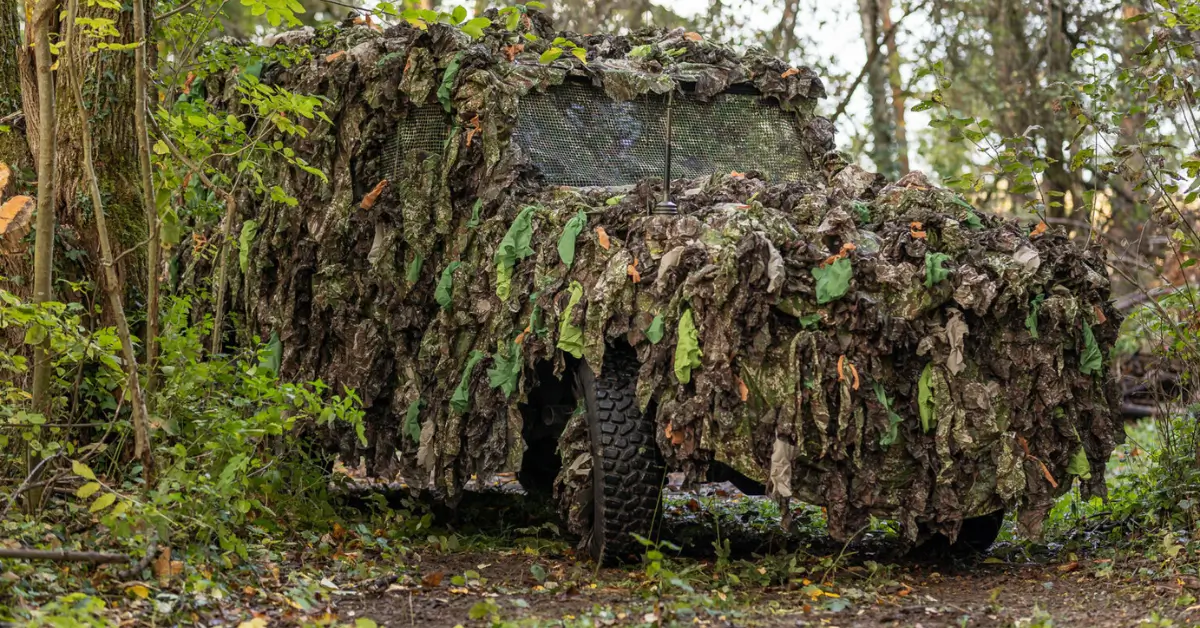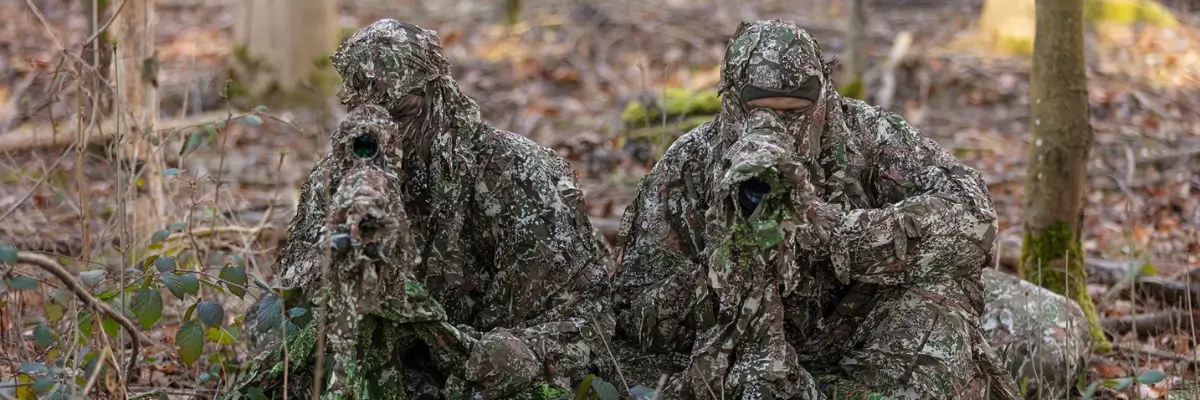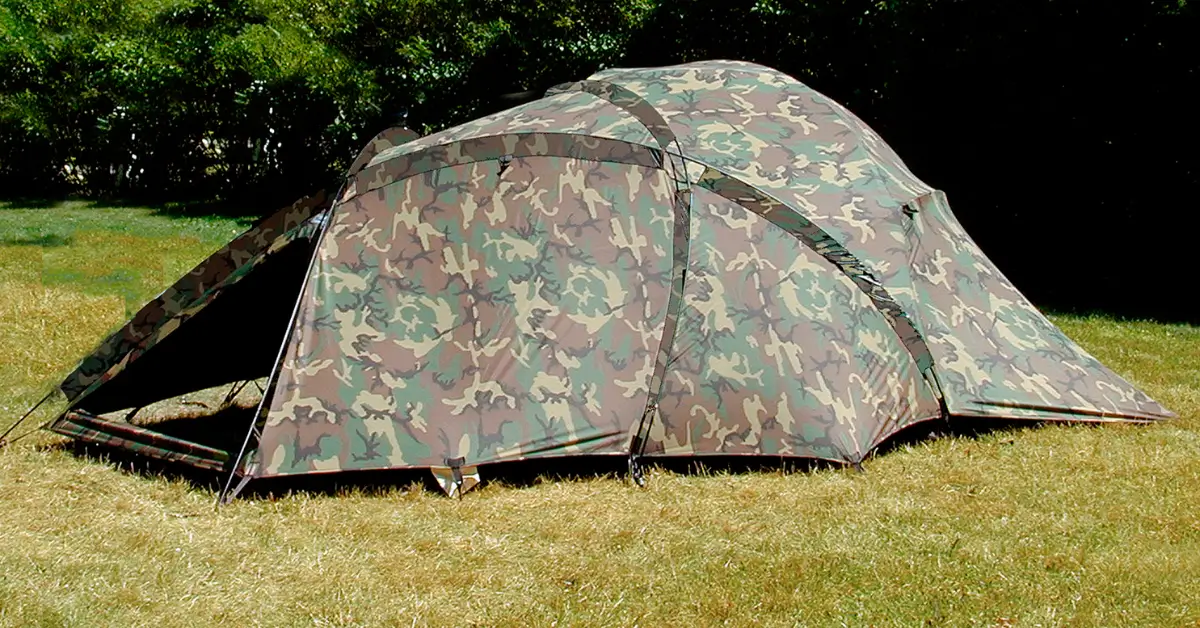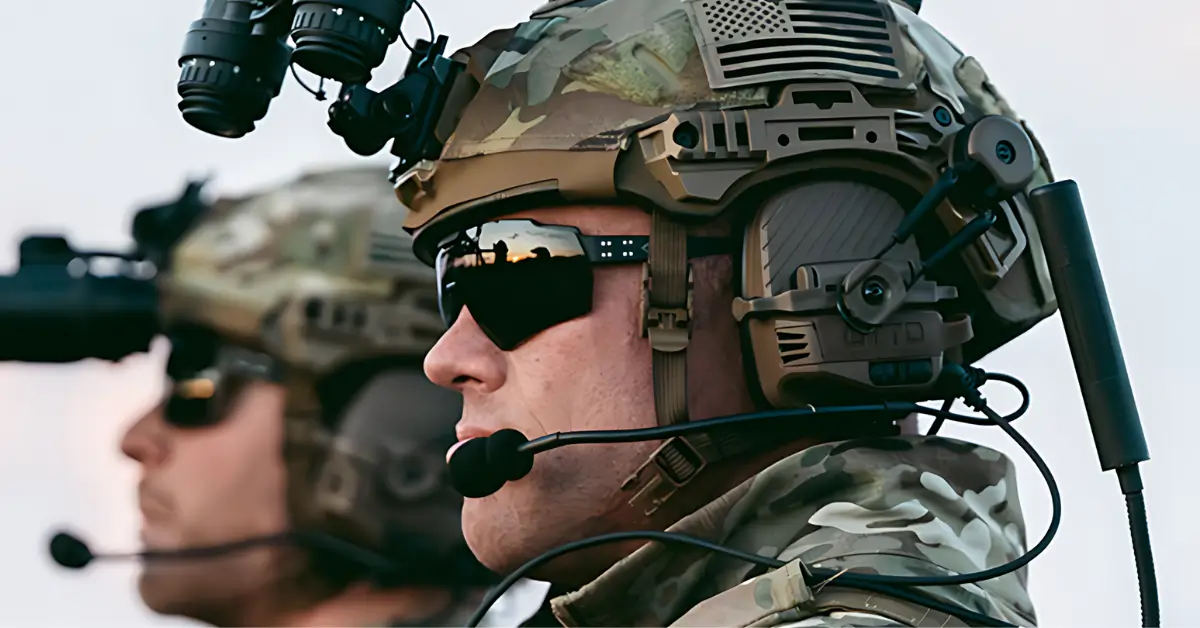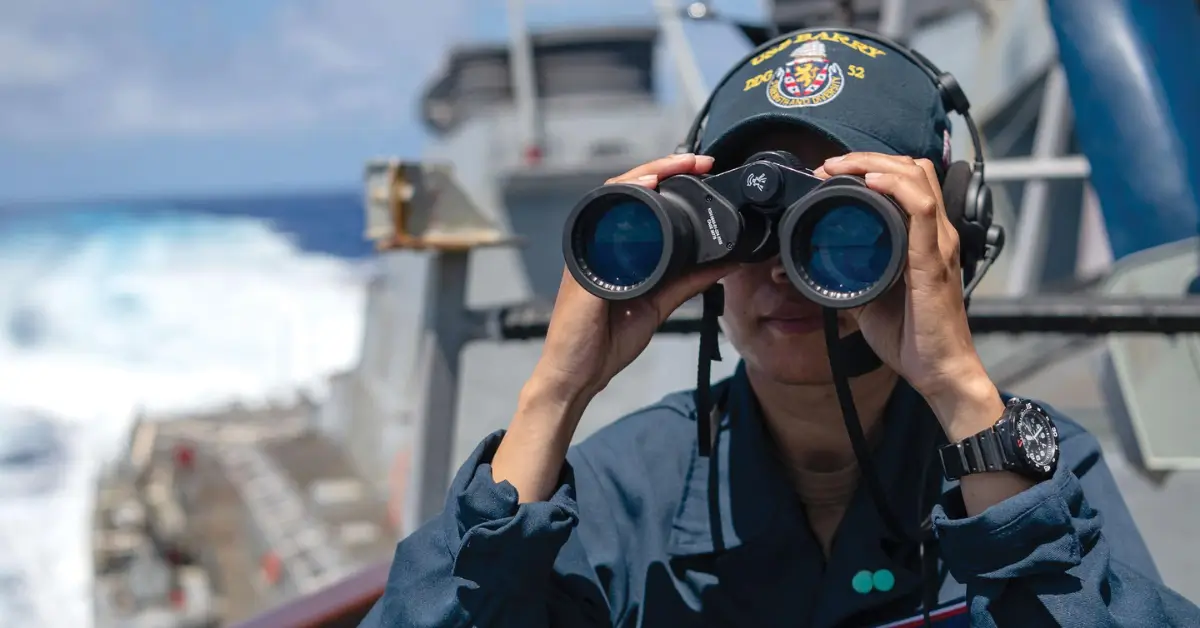For defence specialists, selecting the right camouflage system requires a nuanced understanding of the latest technological advancements and the specific operational environment. This guide provides comprehensive insights into procuring state-of-the-art camouflage solutions, focusing on countering thermal imaging and night vision and utilising AI technologies.
Understanding the Operational Environment
Before delving into the specifics of modern camouflage technologies, it is imperative to assess the operational environment. Factors such as climate, terrain, and the typical reconnaissance technologies employed by potential adversaries must be considered.
Environmental and Terrain Considerations
Forest and Woodland Areas:
- Visual Camouflage: Patterns should mimic the dense foliage and varied textures of the environment.
- Thermal Camouflage: Materials that minimise heat signatures are essential due to the heavy reliance on thermal imaging in such terrains.
Desert and Arid Regions:
- Visual Camouflage: Patterns should reflect the sandy and rocky landscape.
- Thermal Camouflage: Heat-dissipating materials are crucial to blend in with the hot surroundings and to reduce detectability.
Urban Warfare:
- Visual Camouflage: Designs should integrate with urban structures and colours.
- Thermal Camouflage: Advanced materials that blend with the ambient urban heat emissions.
Latest Technological Advancements in Camouflage
Thermal Imaging Countermeasures
Thermal imaging has become a staple in modern reconnaissance and targeting systems. Advanced thermal camouflage materials have been developed to counteract detection. These materials either absorb or dissipate heat to match the object’s thermal signature with the background.
- Adaptive Thermal Camouflage: These systems dynamically adjust their thermal output to match the surrounding temperature. Innovations in nanotechnology and innovative materials have made these systems more efficient and responsive. For instance, consider incorporating metamaterials that can change their thermal properties in response to external stimuli.
- Multispectral Signature Management: While countering thermal and night vision is essential, ideal camouflage should address a broader spectrum of detection methods. Explore materials that can reduce radar signatures or even mimic the background clutter.
Night Vision Evasion Technologies
Night vision devices (NVDs) amplify ambient light to enhance visibility in low-light conditions. Modern camouflage solutions for night vision evasion utilise materials that either absorb or scatter infrared light, reducing the chances of detection.
- IR-Absorbing Materials: These fabrics and coatings absorb infrared light, making the object appear dark to NVDs.
- IR-Absorbing Materials: These fabrics and coatings absorb infrared light, making the object appear dark to NVDs.
- Multispectral Camouflage: Incorporates materials that offer adequate concealment across various wavelengths, including visible, infrared, and radar spectrums.
Artificial Intelligence in Camouflage
AI is revolutionising military camouflage by enabling the development of adaptive systems that respond to environmental changes in real time. AI-driven camouflage solutions use sensors and algorithms to analyse the surrounding environment and adjust the camouflage pattern accordingly.
- Smart Camouflage Nets: These nets are embedded with AI systems that can alter their patterns and colours based on real-time data, offering unparalleled versatility and effectiveness. Imagine a net that can automatically adjust its camouflage for the desert during the day and blend into a jungle environment at night.
- AI-Enhanced Pattern Design: Utilising AI to design camouflage patterns that are statistically optimised for different terrains and operational scenarios, ensuring maximum concealment. AI can analyse vast amounts of data to create disruptive patterns that are highly effective at breaking up an object’s outline.
Sensor Countermeasures
To maximise effectiveness, modern camouflage solutions should address the following types of sensors:
- Visual Sensors: Camouflage patterns and adaptive colours help obscure objects from human vision and optical devices.
- How Visual Sensors Work: Visual sensors rely on the visible spectrum of light to detect and identify objects.
- Camouflage Methods: Use of patterns and colours that blend with the surrounding environment to break up outlines and reduce visibility.
- Infrared (IR) Sensors: IR-absorbing materials and multispectral camouflage reduce visibility to IR sensors and night vision devices.
- How IR Sensors Work: These sensors detect infrared radiation, which is emitted as heat by objects.
- Camouflage Methods: IR-absorbing coatings and fabrics that minimise heat signatures.
- Thermal Sensors: Adaptive thermal camouflage and heat-dissipating materials help match the thermal signature to the environment, avoiding detection by thermal imaging systems.
- How Thermal Sensors Work: They detect differences in heat emitted by objects compared to their surroundings.
- Camouflage Methods: Materials that adjust thermal output to blend with the ambient temperature.
- Radar Sensors: Radar-absorbing materials (RAM) and specific shapes and structures reduce radar cross-section, diminishing radar detectability.
- How Radar Sensors Work: Radar systems emit radio waves and detect their reflections from objects.
- Camouflage Methods: RAM and surface designs that scatter radar waves.
- Acoustic Sensors: Sound-absorbing materials and noise-cancelling technologies reduce acoustic signatures, hindering detection by sound-based sensors.
- How Acoustic Sensors Work: They detect sound waves and vibrations.
- Camouflage Methods: Materials that dampen or neutralise sound emissions.
- Ultraviolet (UV) Sensors: UV-absorbing materials decrease visibility to UV detection systems.
- How UV Sensors Work: These sensors detect ultraviolet light reflected from objects.
- Camouflage Methods: Coatings and fabrics that absorb or block UV light.
- Lidar Sensors: Lidar-scattering materials and reflective coatings distort lidar signals, complicating detection by lidar systems.
- How Lidar Sensors Work: Lidar uses laser pulses to measure distances and create detailed 3D maps.
- Camouflage Methods: Materials that scatter or reflect lidar pulses to distort the returned signal.
Practical Considerations for Defence Procurement
When selecting camouflage solutions, it is essential to consider the following practical aspects:
Durability and Material Properties
- Durability: The chosen camouflage materials must withstand harsh environmental conditions and physical wear and tear. This includes resistance to UV degradation, moisture, and abrasion.
- Weight: Lightweight materials are preferable as they do not hinder mobility or significantly burden personnel and equipment. Balancing durability with weight is crucial for operational efficiency.
- Fireproofing: Camouflage materials should ideally be fire-resistant or fireproof to protect personnel and equipment from incendiary threats. Ensure the materials comply with military fire safety standards.
- Longevity: Evaluate the lifespan of the materials under operational conditions. Long-lasting solutions reduce the frequency and cost of replacements.
Limitations and Trade-offs
Discussing the limitations of current technologies is crucial to understanding their practical application:
- Adaptive Camouflage: May not be effective during rapid temperature changes as the material might need to adjust more quickly.
- Weight vs. Performance: High-performance materials can be heavier, impacting mobility and operational effectiveness. Finding a balance is essential.
- Cost vs. Benefit: Advanced technologies often come at a premium. Evaluating the long-term benefits versus initial costs is important for budgetary decisions.
Emerging Technologies
Keeping an eye on emerging technologies can provide a strategic advantage:
- Active Camouflage: Uses projectors or LED arrays to display real-time images of the surroundings, effectively making objects appear invisible.
- Light-Bending Materials: Metamaterials that can bend light around an object, rendering it invisible to the naked eye and some sensor technologies.
Integration Considerations
Integrating various camouflage solutions seamlessly with existing military equipment can present challenges:
- Compatibility: It is crucial for operational effectiveness to ensure that new camouflage materials and technologies are compatible with existing uniforms, vehicles, and equipment.
- Training: Personnel must be adequately trained to utilise new camouflage technologies effectively. This includes understanding how to deploy and maintain adaptive and active camouflage systems.
- Maintenance: Advanced camouflage systems, especially those incorporating AI or active elements, may require more frequent and specialised maintenance. Evaluating the logistical and operational impact is essential.
Evaluation of Effectiveness
- Field Testing: Ensure that potential camouflage solutions are rigorously tested in the relevant operational environment. Real-world testing is invaluable in assessing the effectiveness of the camouflage against various detection methods.
- Simulation and Modelling: Advanced simulation tools predict the performance of camouflage materials in different scenarios. Narrowing down the most promising solutions before field tests can save time and resources.
Cost vs. Benefit Analysis
- Budget Constraints: While cutting-edge technologies offer superior performance, they often come at a higher cost. Balancing the budget with the operational benefits is crucial.
- Longevity and Durability: Consider the lifespan and durability of the camouflage materials. Long-lasting solutions may justify a higher initial investment by reducing replacement costs over time.
Supplier Reliability
- Reputation and Track Record: Work with suppliers with a proven track record of delivering effective military camouflage solutions. Established companies are more likely to offer reliable, high-quality products.
- Compliance and Standards: Ensure the camouflage solutions meet all relevant military standards and regulations. This ensures compatibility with existing equipment and operational protocols.
Additional Considerations
- Deception Techniques: While this guide has focused on material solutions, camouflage should be holistic. Integrating camouflage with deception tactics can further mislead adversaries. This could involve using decoys, creating false trails, or employing inflatable structures to make it seem like there are more troops or equipment than there are.
- Environmental Impact Considerations: Military forces are increasingly looking for sustainable solutions. When procuring camouflage materials, consider the potential environmental impact, especially regarding disposal or recycling. Explore biodegradable materials or those easily repurposed at the end of their lifespan.
Ensuring Mission Readiness
Procuring military camouflage solutions requires a deep understanding of the operational environment and the latest technological advancements. Defence specialists can make informed decisions that enhance operational effectiveness and ensure the safety and success of military operations by carefully evaluating factors such as terrain, thermal and night vision countermeasures, material durability, weight, fire resistance, and the integration of AI technologies.
For expert guidance in the latest camouflage techniques and technologies, contact an MSS Defence Expert today to ensure your mission readiness.
